- 4 Aktuální žádosti o pomoc Poraďte svým kolegům
- Požádejte o pomoc
- Podejte dotaz do fóra
- Vložit hotový případ
- LOG Decoder
Žádost o pomoc
Žádost o pomoc vyplňte, pokud máte rozpracovaný diagnostický případ na konkrétním vozidle, u kterého potřebujete pomoci zjistit skutečnou příčinu závady.
Pro naše nekonvenční metody je nutný základ znalostí a mít vlastní vybavení minimálně pro "logování", lépe však osciloskop. Nejlepší přípravou pro práci jsou naše videoškolení a akademie.
Jak to funguje?
Do online formuláře v jednotlivých krocích vyplníte všechny důležité údaje k případu a poté Vám ostatní registrovaní diagnostici poradí v komentářích*.
Supervizor a moderátoři FCD.eu samozřejmě vše doplňují a kontrolují správnost informací, aby cesta vedla ke správnému cíli.
Požádat o pomocDiagnostický případ
Fluctuating adaptives on a Jaguar from Stuttgart
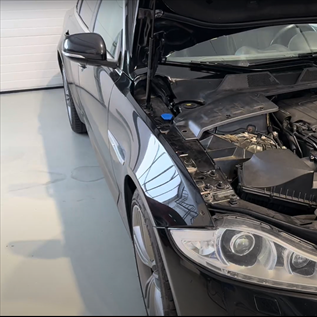
Informace o vozidle
| VIN: | SAJAA28R9CMV21037 |
| Výrobce: | Jaguar |
| Model: | XJ |
| Rok výroby: | 2012 |
| Kód motoru: | 5,0 Supercharged |
| Typ motoru: | AJ-133/508PS |
| Výkon (kW): | 375 kW |
| Převodovka: | Automatická |
| Palivo: | Benzín |
| Najeto: | 128 623 km |
Jak se závada projevuje
Nefunguje / funguje nesprávně. The MIL light illuminates. The A/F mixture measured in Stuttgart is too rich.
Jak často se závada projevuje
-
Sporadicky / za specifických podmínek.
- Za jiných podmínek. The A/F mixture has different richness values under different conditions. Sometimes, they are lower, and sometimes, they are higher.
V jakém systému se závada vyskytuje
- Motoru.
- během jízdy
- [P0172 00] System too rich (bank 1)
- [P0175 00] System too rich (bank 2)
- [P0430 00] Catalyst system efficiency below threshold (bank 2)
- trvalá závada
- sporadická závada
Doposud provedeno bez úspěchu
Owner complaint:The engine was overhauled three years ago due to a timing system failure. The valves hit the pistons. This was caused by an incorrect engine oil specification. New parts were installed. Since the engine repairs, the vehicle has covered 12,000 km over two years. The engine management warning light is ON. The A/F mixture is too rich at idle and while driving (see the attached protocol from Stuttgart).
The emission test results suggest that the problem is on the left engine bank. The engine running is slightly irregular.
Závěr
VOZIDLO JSEM NEOPRAVOVAL, PROVÁDĚL JSEM DIAGNOSTICKÉ PRÁCETesting for a Jaguar workshop in Stuttgart.
The light comes on because the mixture is too rich. A large quantity of petrol has been detected in the engine oil, probably from a leaking high-pressure fuel pump.
Altogether, three faults were discovered:
1) The engine oil contains a large quantity of petrol
2) Different evaluation of the mixture richness by the wideband Lambda sensors (one of the sensors has an offset measuring range relative to the other sensor)
3) Cylinder #6 and #7 have misfire at 1400 rpm
Result: Contamination of the engine oil with petrol is a dangerous fault (there is a risk of mechanical engine seizure or sudden destruction). The cause may be a leaking high-pressure fuel pump installed on the rear side of the engine and driven from the left exhaust cam. Injector leakage is very unlikely (residual static pressure holds and does not drop even after a few minutes). Differences in camshaft position adaptives are minimal. We assume the exhaust gas recirculation system isn't causing the negative adaptive values on both engine cylinder banks. The mixture changed from rich to lean when we disconnected the crankcase ventilation system for simulation.
Recommended repair procedure:
1) Replace the high-pressure fuel pump (or fix the leaking issue)
2) Replace the engine oil and oil filter
3) LOG recording after repair and evaluation of the control Lambda sensors if there is a problem with an offset range difference between the sensors.
4) Verify the efficiency of both three-way converters after repair (Justification: It's possible that when the mixture adaptives are at –20%, the unwanted "oscillation" of the monitoring Lambda sensors is only a result of "unjustifiable" mixture leaning due to reduced injected quantity.
Obrázky, fotografie a soubory
The engine doesn't always run smoothly (17247/18)
Exhaust emissions test result from Stuttgart (17247/21)
I am very surprised that somebody in Stuttgart is measuring exhaust emissions when the engine temperature is 10° C!!!!The mixture is too rich. More importantly, the COcorr value isn't relevant. (The values are implausible for a different oxygen content than possible during combustion.). The low CO2 value is simply all wrong, including the unburnt hydrocarbons HC.
FCD-Logger recording – engine at operating temperature after long idling (17247/22)
If you wait for a while at idle with the engine warmed up by driving, the adaptives rise to maximum negative values for cylinder Bank 2 up to the maximum limit—56.30%! For cylinder Bank 1, it's very similar.Under load the mixture adaptives are almost normal (17247/23)
As soon as the vehicle is driven under higher load conditions (very difficult with 500 HP outside the racing track), the adaptives go to zero or even into positive values (see cylinder Bank 1).Exhaust gas emissions measured at the FCD garage at increased idle (17247/24)
The adaptives are correcting the problem of the mixture being too rich. The emission values are OK. But the adaptives are now at –26%, and the residual oxygen content is above 0.5%. This value should be lower. At least there is a chance that after repair, both converters will work correctly.LOG recording of idle and increased idle (17247/25)
Frequent cylinder #7 and #6 multiple misfiresLog recording with disconnected crankcase ventilation (17247/26)
The mixture adaptives dropped from –50% to –20%, with slightly better values on cylinder bank 1 (–18%).However, the engine has misfires at increased idle speed at 1400 rpm on cylinders #6 and #7.
Measuring the petrol content in engine oil (17247/27)
The emissions tester measuring probe was placed in front of the outlet of the PCV ventilation before the airflow sensor.Content of petrol fumes in the engine oil (17247/28)
Note: This is not a measurement at the exhaust tailpipe but at the outlet from the crankcase ventilation! Therefore, only the unburned hydrocarbon component "HC" can be evaluated!Normal readings should be around 100 to 400 ppm HC. On this car, it's 18,000 ppm HC. The smell at the outlet is similar to the petrol station filling nozzle. It smells intensely of petrol. The engine oil volume is heavily contaminated with petrol.
The downstream Lambda sensors suggest that the converters are not functioning. But this could be a misinterpretation. (17247/29)
This is a reference image of NON-FUNCTIONAL converters. It may be different after repair. Once the mixture adaptives stabilize around zero, the exhaust gas won't contain excess oxygen, and the value may move above the unstable breakdown "jump" voltage of the Lambda sensor of 0.67 V or even above 0.74 V, which would be optimal.Full load – different evaluation of the mixture by the Lambda sensors (17247/30)
One of the wideband Lambda sensors will show differently than the other because, at full load, they have different current values.Both pumps were leaking (17247/51)
Someone forgot to install the guide caps during assembly. The pistons without the guide caps don't have the required support and therefore fail easily and fuel leaks around the pistons.Soubory ke stažení
-
pdfVehicle repair initial protocol (17247/19).pdf Initial scan of all ECU's before repair.Stáhnout soubor
-
pdfAll ECU DTC memory scan after fault code memory erasure (17247/20).pdfStáhnout soubor
-
xlsxInitial Log from FCD-Logger (17247/31).xlsx Fuel adaptives as high as –56 %!Stáhnout soubor
-
xlsxAdaptives and cylinder #6 and #7 misfires (17247/32).xlsx At around 1400 rpm, we can feel cylinder misfires, and the ECU is counting them.Stáhnout soubor
-
xlsxLog recording with two disconnected hoses from the crankcase ventilation (17247/33).xlsx The fuel adaptives at idle have reduced from –56% to –20%. A fault code related to mixture richness has shown up only for cylinder bank 2.Stáhnout soubor





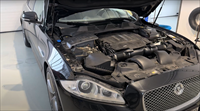
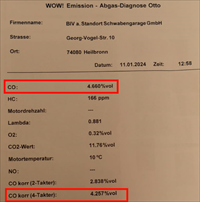
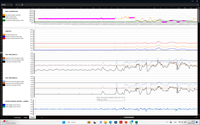
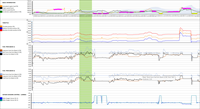
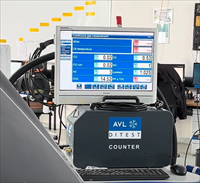


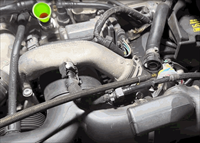
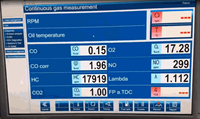

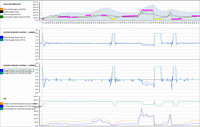
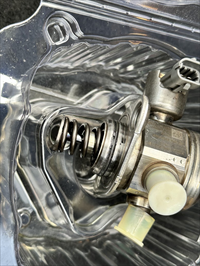

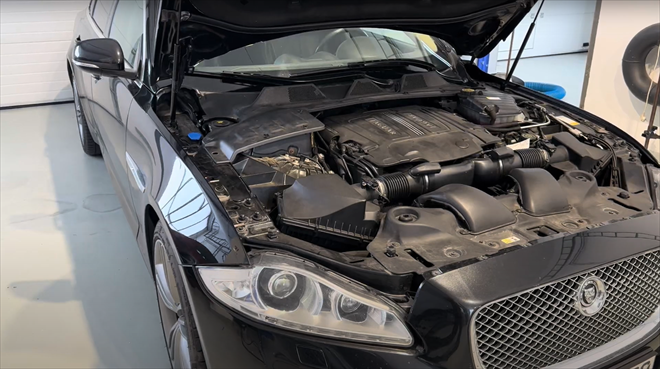
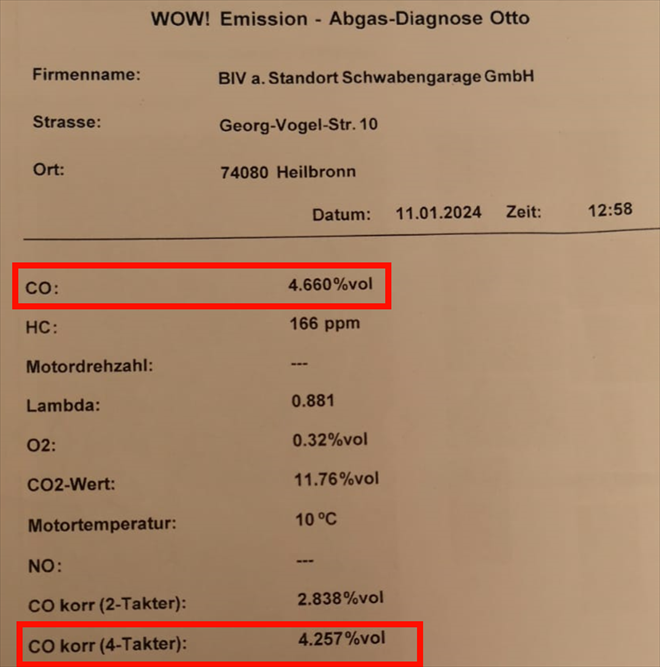
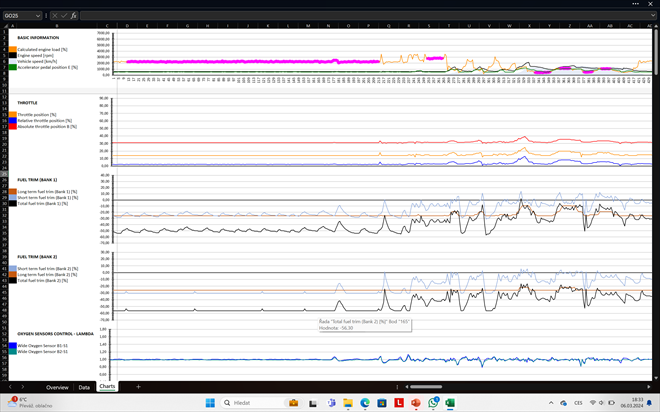
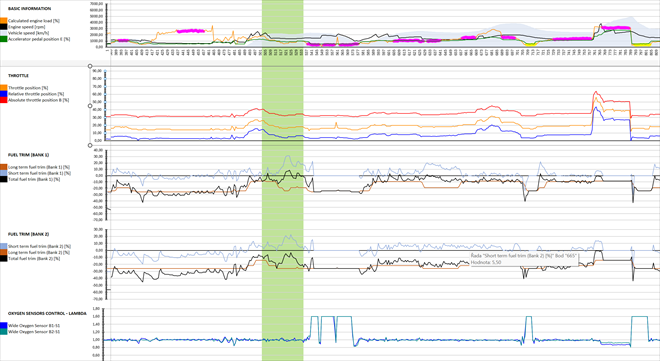
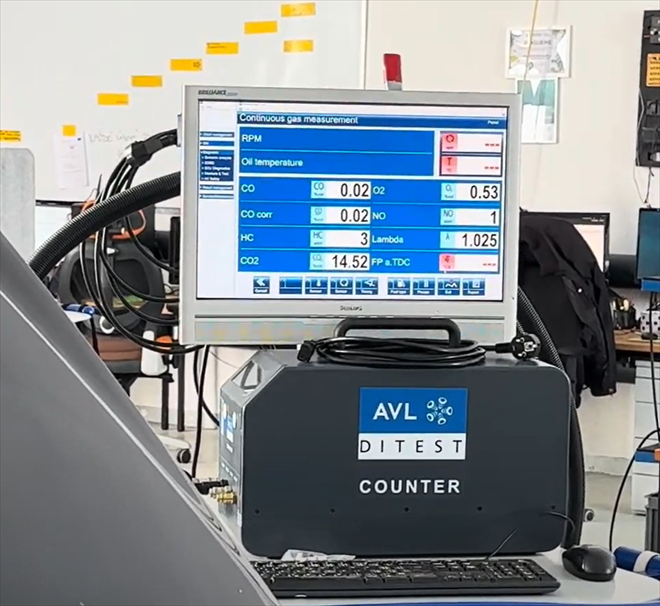
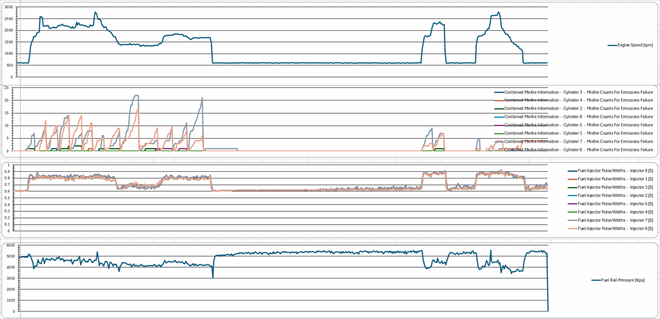
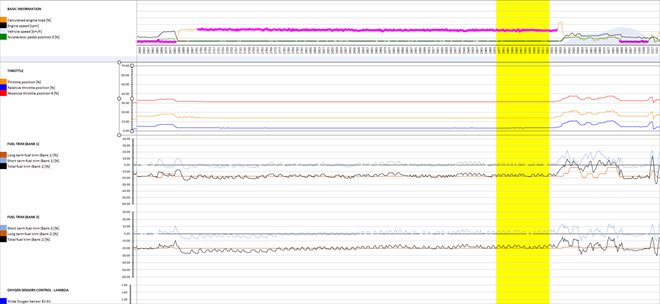
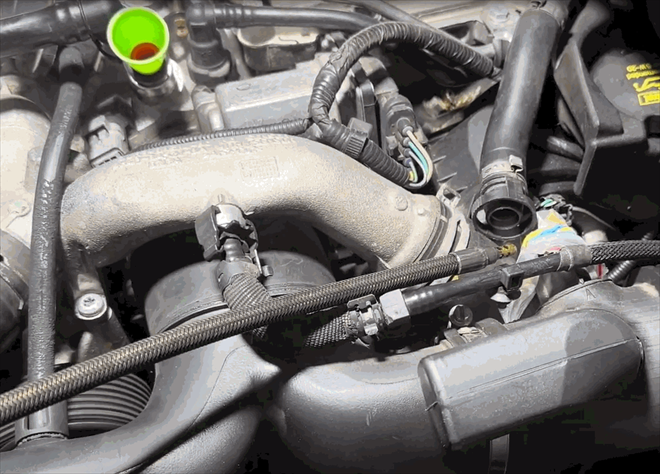
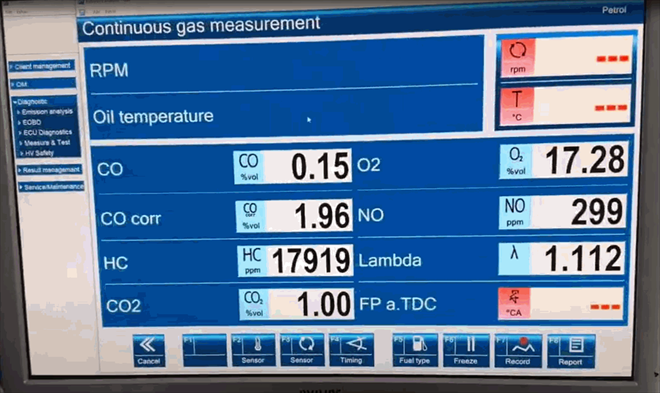
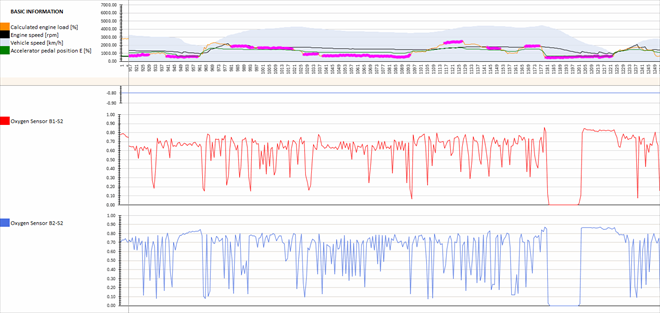
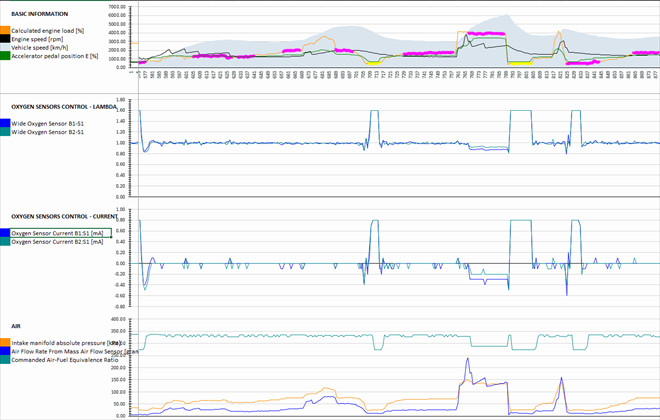
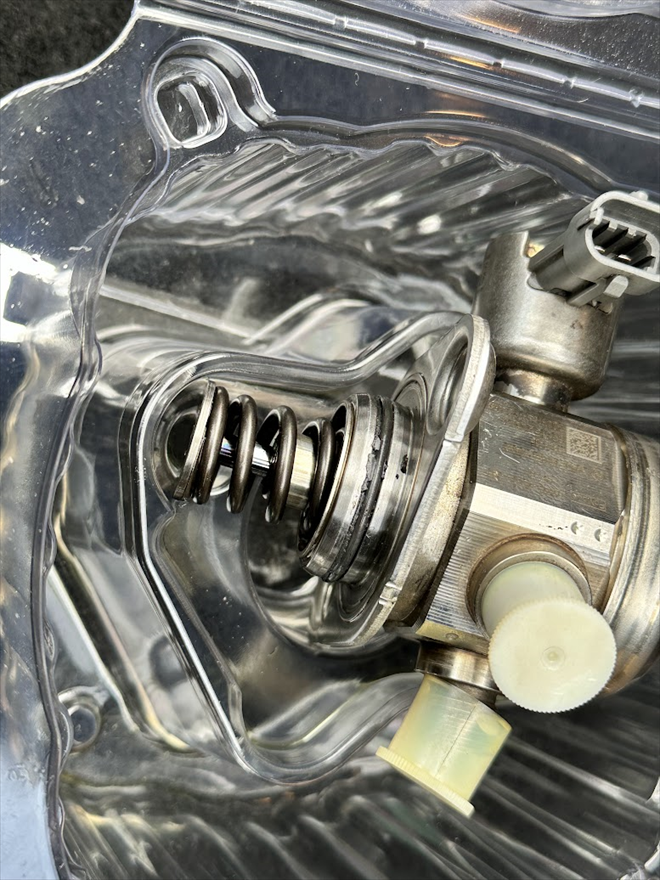
Komentáře (0)